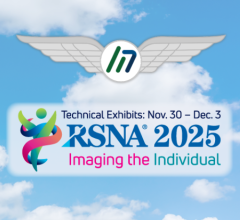BLOG: Orchestrating Radiology Workflow in a Large, Distributed Reading Environment

Large radiology groups often face challenges distributing workflow effectively and fairly across the organization. Different sites have various service level agreements (SLAs), and different technology systems limit how they can work together. Large and distributed radiology organizations rely on effective workflow orchestration to engage multiple radiologists, from different sub-specialties, at a range of locations, reading for many different facilities.
“We have radiologists distributed over a very wide area. We have radiologists on the east coast and we also have a practice in Hawaii. We’re in six time zones, and to coordinate that, you need optimization and you need workflow,” said Andrew Deutsch, M.D., founder and CEO of Renaissance Imaging Medical Associates (RIMA).
RIMA is now a part of Radiology Partners, the largest private physician-owned and led practice in the country. As a single-source, full-line provider of specialized diagnostic imaging services, RIMA employs about 120 radiologists who read more than 1.5 million studies per year across about 70 sites, including 20 hospitals.
With multiple sites operating with PACS and RIS from multiple vendors, RIMA relies on Philips Vue PACS advanced workflow orchestration to prioritize workload in a large, distributed reading environment.
Using AI to Set Priorities
Philips’ workflow orchestrator uses an artificial intelligence (AI) engine to analyze incoming studies and assign exams in the order needed to meet certain organizational goals, such as turnaround time, subspecialty reads and site affiliations.
“The first priority for us is turnaround time, or SLAs, where a customer wants exams read within a time period,” Deutsch said. Adherence to SLAs are critically important for hospitals, where emergency departments could have an SLA of only 15 to 20 minutes for a complete study. “On the other hand, with an outpatient MRI, you have a lot more leniency and flexibility about when a study is read, and thus, more opportunity to match the best radiologists to that case.”
RIMA’s orchestration system can establish parameters for each customer, to accommodate preferences for turnaround time, subspecialists or location. Ideally, every exam should be read by the most appropriate radiologist, but SLAs are an important constraint. As time elapses, the system exposes unread exams to a broader audience.
“We first try to optimize all three buckets for a certain amount of time,” Deutsch said. “The turnaround clock is always ticking. And then there's the attempt to have exams be subspecialty read, and ideally subspecialty read at a location that has a relationship with the hospital. That's the trifecta. And then everything plays off from there.”
As exams reach certain pre-established SLA thresholds for that provider or facility, a tiered exposure mechanism adjusts the worklist to increase the likelihood that exams will be read on time.
Eliminating Cherry Picking
A traditional radiology worklist is a flat list of stat and non-stat exams. Radiologists often spend valuable time selecting the next case to read and will “cherry pick” exams, choosing easier exams or those with higher relative value units (RVUs) for reimbursement.
“Given the ability to choose, radiologists will choose the work that they most want to do,” Deutsch said. “Often it's the easiest or the most interesting. People will go through the list and try to take the cases they want.” This can lead to unbalanced workloads and unfairness among radiologists.
Workflow orchestration effectively limits the number of exams that a radiologist can choose from, enforcing balance and fairness across sites and users. An orchestration system can easily identify if any radiologists are cherry picking exams, and will report any “glass breaking” events, where a radiologist reads outside of their assigned exams.
Some radiologists prefer to operate in “auto-next mode” where the system immediately brings up the next study to read without reverting back to options on the worklist.
“From the perspective of the radiologists, you have to have a lot of trust in the system,” Deutsch said. “You have trust that it's fair that the next case came up with all the rules and consideration applied, between turnaround time, subspecialty, and relationship management. That will be the most efficient way to get the work done.”
Demonstrating Results
In the first eight months after implementing advance workflow orchestration, RIMA saw a 20 percent increase in the number of reports read within SLA, and an increase in the number of exams read by subspecialists. Deutsch estimates that 80 percent of RIMA’s studies are now read by a subspecialist in their field.
While SLAs and subspecialty reads are important — and relatively easy — metrics to measure, Deutsch says the third element of relationship management between the customer and the radiologist is an equally important component.
“The relationships really matter, and they're the ones that are the most difficult to put into this system. Getting the optimal match of the relationship — be it location or specificity — and making it work with the first two buckets, that's the hardest,” Deutsch said. “I've learned this lesson early on. Don't forget about the local relationships. They really, really matter.”
Effectively managing the workflow is a necessary part of an overall enterprise imaging strategy, and will continue to play a role in increasing efficiency and productivity. As more is expected from radiology practices, workflow orchestration can help meet increasing customer demands and help the radiologists be successful.
“We want the systems to work as perfectly as possible,” Deutsch said. “We want the information to be there for them so they can read their studies. We want to help the rads in every way that we can.”
Editor's note: This blog is the final segment of a two-part series about enterprise imaging strategy. The first BLOG: Remote Reading Positions Northwell Health for Success During COVID-19 Pandemic and Beyond, can be found here.



 December 10, 2025
December 10, 2025 









